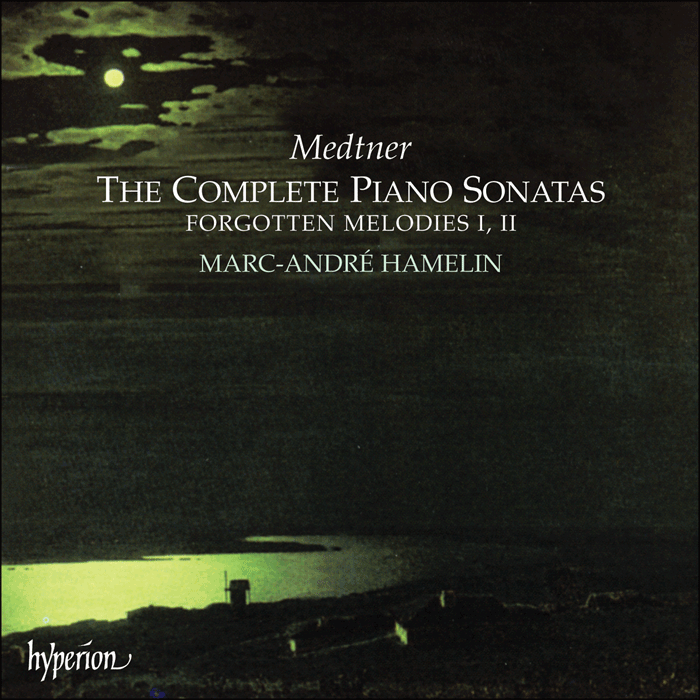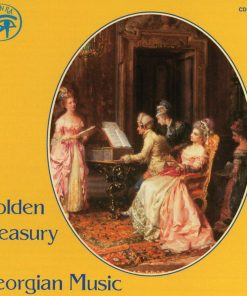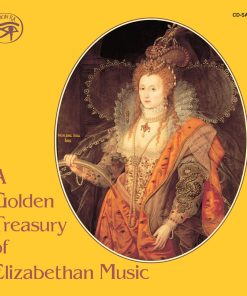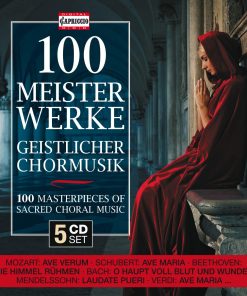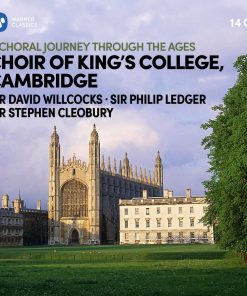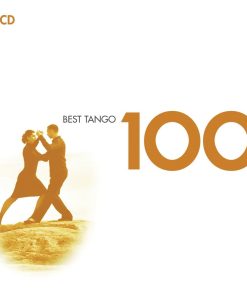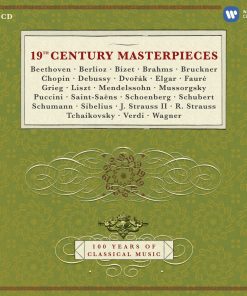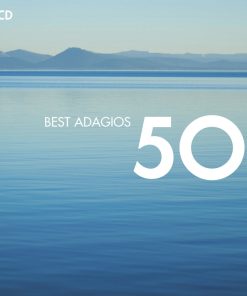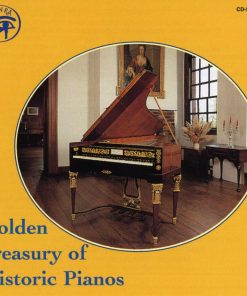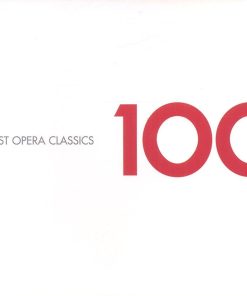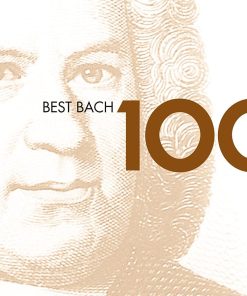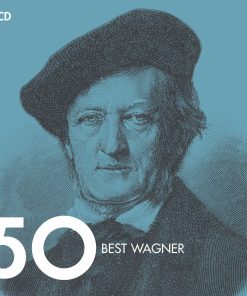MEDTNER: THE COMPLETE PIANO SONATAS – Marc-André Hamelin Hyperion
$ 69,99 $ 34,99

Sonata in F minor Op 5[31’29]CD1
1
Allegro[12’25]2
Intermezzo: Allegro[3’22]3
Largo divoto[8’08]4
Finale: Allegro risoluto[7’34]Skazki Op 8[9’01]5
Andantino[3’09]6
Allegro[5’52]Sonaten-Triade Op 11[24’47]7
Sonata in A flat major[9’46]8
Sonata in D minor ‘Sonata-Elegy'[7’09]9
Sonata in C major[7’52]CD2
10
Sonata in G minor Op 22[15’47]Sonata-Skazka in C minor Op 25 No 1[11’40]11
Allegro abbandonamente[4’47]12
Andantino con moto[3’23]13
Allegro con spirito[3’30]Sonata in E minor ‘Night Wind’ Op 25 No 2[33’21]14
Introduzione: Andante – Allegro[18’49]15
Allegro molto sfrenatamente, presto[14’32]Sonata-Ballada in F sharp major Op 27[22’44]CD3
16
Allegretto[10’17]17
Introduzione: Mesto[3’31]18
Finale: Allegro[8’56]19
Sonata in A minor Op 30[12’09]Vergessene Weisen ‘Forgotten Melodies’ Op 38[39’19]20
Sonata-Reminiscenza in A minor: Allegretto tranquillo[16’04]21
Danza graziosa: Con moto leggiero[2’57]22
Danza festiva: Presto[4’47]23
Canzona fluviala: Allegretto con moto[2’40]24
Danza rustica: Allegro commodo[2’01]25
Canzona serenata in F minor: Moderato[4’17]26
Danza silvestra[3’40]27
Alla Reminiscenza: Quasi coda[2’53]Vergessene Weisen ‘Forgotten Melodies’ Op 39[26’08]CD4
28
Meditazione: Introduzione, quasi Cadenza – Meno mosso – Meditamente[4’44]29
Romanza: Meditamente[4’19]30
Primavera: Vivace[3’31]31
Canzona matinata in G major: Allegretto cantando, ma sempre con moto[4’34]32
Sonata tragica in C minor: Allegro risoluto[9’00]Sonata in B flat minor ‘Sonata Romantica’ Op 53 No 1[23’40]33
Romanza: Andantino con moto, ma sempre espressivo –[7’47]34
Scherzo: Allegro[4’27]35
Meditazione: Andante con moto[3’26]36
Finale: Allegro non troppo[8’00]37
Sonata in F minor ‘Sonata Minacciosa’ Op 53 No 2[16’13]Sonate-Idylle in G major Op 56[11’18]38
Pastorale: Allegretto cantabile[3’55]39
Allegro moderato e cantabile[7’23]

‘I repeat what I said to you back in Russia: you are, in my opinion, the greatest composer of our time.’ – Sergei Rachmaninov (1921)
It would be hard to overestimate the importance of this set.
Medtner’s piano compositions are arguably the last area of great Romantic piano repertoire to be discovered. His music is difficult, both technically and intellectually, and does not ‘play to the gallery’, which may explain its neglect. But once his world has been entered it proves endlessly fascinating and compelling, his work growing in stature with every hearing until one is left in no doubt as to its overwhelming effect.
Central to his output are the 14 Piano Sonatas (though the title covers a multitude of structures and sizes) and here for the first time we have the complete cycle recorded by one artist.
Fast Shipping and Professional Packing
Due to our longstanding partnership with UPS FedEx DHL and other leading international carriers, we are able to provide a range of shipping options. Our warehouse staff are highly trained to pack your goods exactly according to the specifications that we supply. Your goods will undergo a thorough examination and will be safely packaged prior to being sent out. Everyday we deliver hundreds of packages to our customers from all over the world. This is an indication of our dedication to being the largest online retailer worldwide. Warehouses and distribution centers can be located in Europe as well as the USA.
Orders with more than 1 item are assigned processing periods for each item.
Before shipment, all ordered products will be thoroughly inspected. Today, most orders will be shipped within 48 hours. The estimated delivery time is between 3-7 days.
Returns
The stock is constantly changing. It's not entirely managed by us since we are involved with multiple parties such as the factory and our storage. The actual stock can fluctuate at any time. Please understand it may happen that your order will be out of stock when the order is placed.
Our policy is valid for 30 days. If you haven't received your product within 30 days, we're not able to issue either a return or exchange.
You are able to return a product if it is unused and in the same condition when you received it. It must also still remain in the original packaging.
Related products
MUSIC CDS
MUSIC CDS
MUSIC CDS
MUSIC CDS
MUSIC CDS
MUSIC CDS
MUSIC CDS
